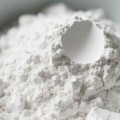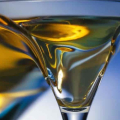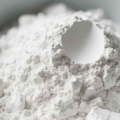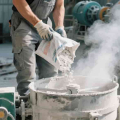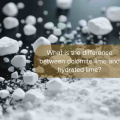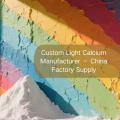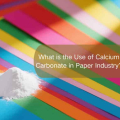- Welcome to China Calcium Carbonate Manufacturer
- WeChat:15078781000
Introduction
Calcium carbonate (CaCO₃) is a widely used industrial material that comes in several forms, including heavy, light, and nano variants. Each type differs in particle size, production method, and application suitability. This article explores their differences, advantages, and ideal use cases for buyers seeking optimal performance in industries such as plastics, rubber, paints, inks, and more.
What Is Heavy Calcium Carbonate?
Heavy calcium carbonate, also known as ground calcium carbonate (GCC), is produced by mechanically crushing and grinding natural limestone. It typically features larger particles (ranging from 5–20 μm), high whiteness, and low oil absorption. Common applications include:
Paints and coatings
Rubber and cable manufacturing
Plastics as a filler
It is ideal for industries that prioritize cost-efficiency and bulk volume. While both types are widely used, the choice depends on specific industry needs.
Learn more about the detailed differences in our article: Heavy vs Light Calcium Carbonate: Key Differences
What Is Light Calcium Carbonate?
Light calcium carbonate, or precipitated calcium carbonate (PCC), is synthetically produced through chemical precipitation. It has a smaller particle size (typically 0.5–2 μm), high purity, and better dispersion. Applications include:
High-end paints and coatings
Paper manufacturing
Adhesives and sealants
Personal care products
Its uniform morphology allows it to enhance surface finish and mechanical properties of end products.
What Is Nano Calcium Carbonate?
Nano calcium carbonate (nano CaCO₃) features ultra-fine particles, typically ranging from 20–100 nanometers. Thanks to its high surface area, excellent dispersibility, and reactive surface chemistry, it is used in:
High-performance plastics and engineering polymers
Water-based inks and UV-curable systems
Lithium battery separators and anodes
Sealants, lubricants, and coatings
In polymer-based composites, nano CaCO₃ enhances mechanical strength, thermal stability, and processability.
According to this research article on nano calcium carbonate in polymers, its addition significantly improves tensile strength and barrier properties in polymer matrices.
How Does Nano Calcium Carbonate Compare?
When comparing nano CaCO₃ with heavy and light variants, the differences are notable:
Particle size:
Heavy CaCO₃: 5–20 μm
Light CaCO₃: 0.5–2 μm
Nano CaCO₃: 20–100 nm
Surface area & activity:
Nano CaCO₃ has much higher surface area and surface activity, making it more reactive and effective in enhancing mechanical and chemical properties.
Applications:
Nano: High-end plastics, batteries, inks
Light: Paints, coatings, paper
Heavy: Rubber, construction materials
Nano calcium carbonate’s ultra-fine particle size (20–100 nm), high surface area, and superior dispersion make it ideal for high-performance plastics, inks, lithium batteries, and more. For detailed insights on its applications and advantages, check out Applications and Advantages of Nano Calcium Carbonate.

Comparative Table: Heavy vs. Light vs. Nano Calcium Carbonate
| Property / Type | Heavy CaCO₃ | Light CaCO₃ | Nano CaCO₃ |
|---|---|---|---|
| Particle Size | 5–20 μm | 0.5–2 μm | 20–100 nm |
| Production Method | Mechanical grinding | Chemical precipitation | Nano synthesis |
| Surface Area | Low | Medium | High |
| Dispersion in Matrix | Moderate | Good | Excellent |
| Common Applications | Rubber, paints | Paints, paper | Plastics, batteries |
| Cost | Low | Medium | High |
Final Thoughts
Choosing between heavy, light, and nano calcium carbonate depends on your product requirements—whether you need bulk filler, surface smoothness, or performance enhancement. Understanding these differences can help you source the right type of CaCO₃ for optimal results in your specific application.
For tailored supply and specification support, feel free to contact Jintai — a reliable manufacturer based in China specializing in customizable CaCO₃ solutions.
